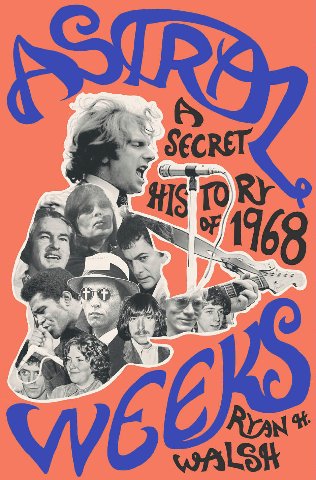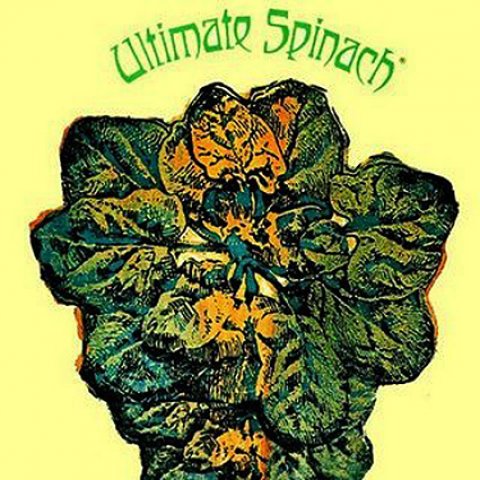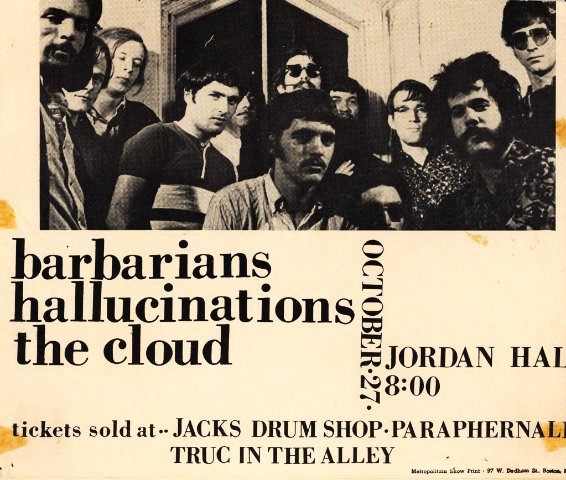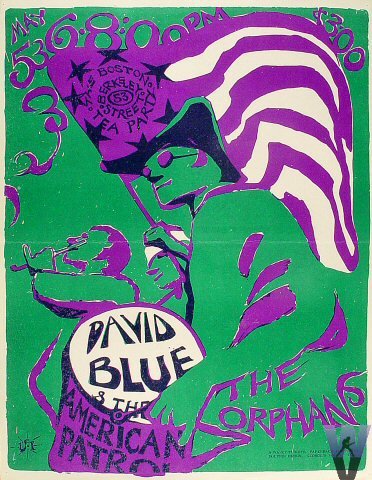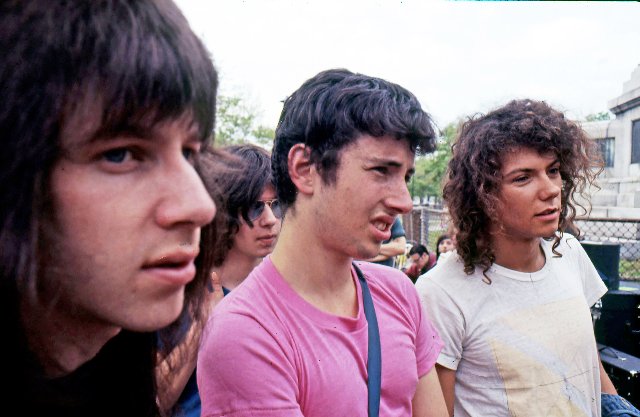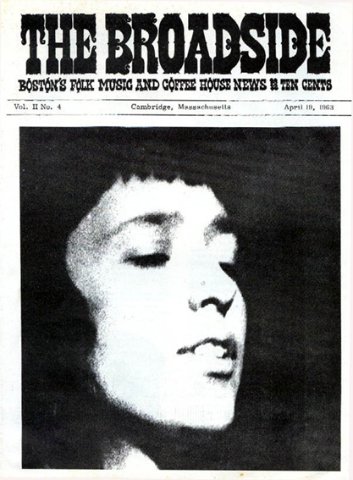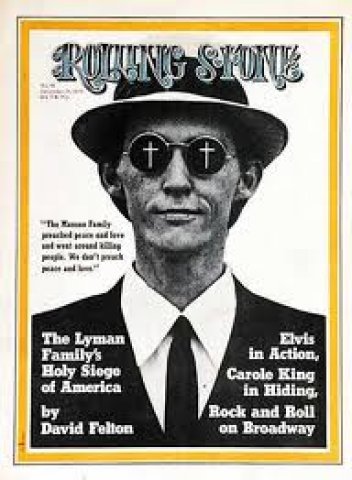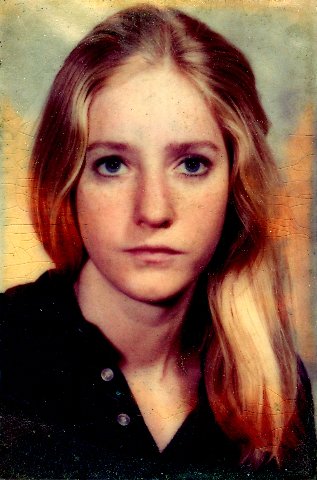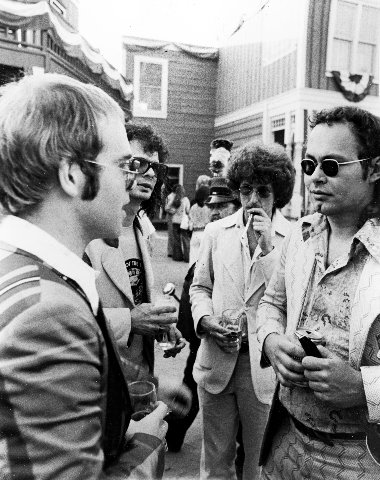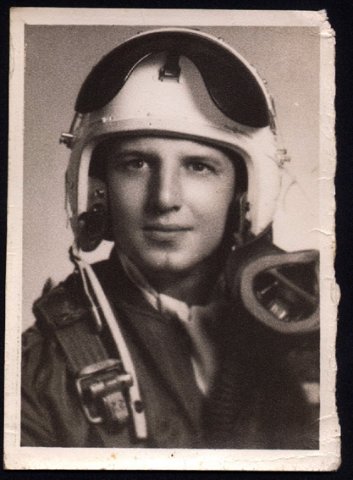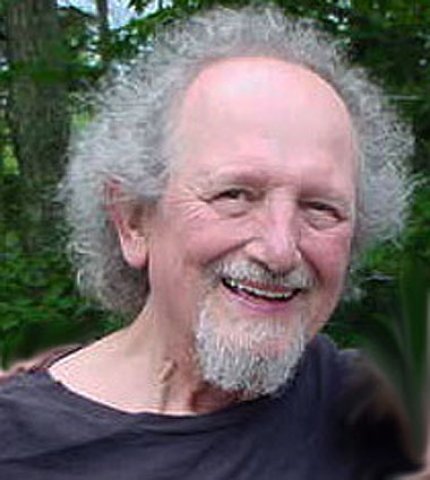Astral Weeks: A Secret History of 1968
Ryan H. Walsh’s Landmark Study of the Counter Culture in Boston
By: Charles Giuliano - Mar 12, 2018
Astral Weeks: A Secret History of 1968
By Ryan H. Walsh
Penguin Books, 2018
357 pages, illustrated, with notes, index and bibliography
U.S,, $27, Canada, $36
ISBN 978-0-7352-2134-5
While in San Francisco, last June, we toured an epic exhibition surveying the Summer of Love. It captured the vibrancy of emerging rock bands- Grateful Dead, Jefferson Airplane, Big Brother and the Holding Company- the psychedelic posters that promoted their gigs at Bill Graham’s Fillmore Ballroom, and the colorful gear worn by zonked out fans.
As the one-hit wonder, Scott McKenzie, crooned “If you’re going to San Francisco be sure to wear some flowers in your hair. All around the nation, there’s a new vibration.”
Wearing a white suit I heard him sing that song at the Electric Circus, a psychedelic disco at St. Mark’s Place in Manhattan. From a storefront on East 11th Street in the Lower East Side I witnessed a tidal wave of lost kids swept up by Tim Leary’s mantra “Turn on, Tune in, and Drop Out.”
It got ugly on October 8, 1967 when Linda Fitzpatrick, 18, the daughter of a wealthy Connecticut family, and James “Groovy” Hutchinson, 21, a dropout from Rhode Island, were found naked and bludgeoned to death. The Times was all over the story and a reporter fell by asking questions. “Speed kills” I told him.
That spring a girl friend, Arden Harrison, visited on her way to Mexico. I closed shop and we hit the road running out of gas, so to speak, during Mardi Gras in New Orleans. We had spent time in Clearwater, Florida when Karinna, the former model and wife of Phil Bleeth, was very pregnant with Jasmine a later star of the hit TV series Bay Watch.
Abandoning hope of Mexico we made our way to Boston and set up housekeeping in a cheap apartment on Alpine Street in the Fort Hill neighborhood of Roxbury.
While in New York, I had run into an old friend, Mel Lyman, hanging out at Max’s Kansas City. He invited me to write for his newspaper Avatar. It was branching out with a more progressive New York version edited by Brian Keating. We got along and he told me he was interested in exploring the new journalism. The Boston publication, focused on Fort Hill’s Lyman Family, was edited by the more authoritarian and doctrinaire Wayne Hansen.
Lyman had appeared as the boyfriend of Judy Silver a Brandeis student. I visited them off campus to tutor her for an art history exam. That fell apart when Mel produced his legendary maple sugar cured reefer. He also made a big batch of fudge.
Because I had a car Mel talked me into driving to Harlan County, Kentucky during spring break. While the other guys crashed Mel and I had breakfast prepared by the wife of farmer/ musician Obray Ramsey. They played a few tunes. After planting a crop he announced that he and a friend would hitch hike to Florida. John Kostick and I drove back to Waltham mostly running on vapor.
Mel was busted in Florida but got probation when he “took a job.” That happened in the summer of 1963 when Jim Kweskin fell by our Waltham crash pad on Hartwell Street and auditioned Mel for his jug band.
That didn’t quite work out as Mel played bluegrass, five string banjo, and not the four string rhythm banjo needed by the band. Mel got eased out by Bill Keith but took over on harmonica. He moved to the attic of Kweskin’s home on Huron Avenue in Cambridge.
There had been censorship by a city then known for its slogan “Banned in Boston.” There was the index published by The Pilot the official organ of the Roman Catholic Church. As well as the official city censor, Dick Sinnott, who I later got to know and found to be witty, old school and not at all unpleasant. It was a bit of a charade in a city where anything was possible if you lined the right palm with silver. During Prohibition, for example, my grandfather’s bar never closed.
When the city turned on the heat Lyman and Avatar fought back. Dennis Dreher designed a boldly lettered centerfold that spelled out four forbidden words: Fuck, Shit, Piss, Cunt.
The charismatic Lyman, a bluegrass musician, Woody Guthrie acolyte, and later self declared author of “Autobiography of a World Savior” (published by Cinematheque entrepreneur Jonas Mekas) attracted powerful friends including pro bono attorneys. Renowned pot lawyer, James Oteri, argued freedom of the press before Judge Elijah Adlow. The legal struggle generated media coverage that boosted sales. When the Hill freaked and confiscted issue #25 which was assembled by an enlightened collective they sold a press run of 45,000 copies for some 25 pieces of silver. By agreement with Lyman there was to be no mention of Avatar in the issue. I designed an abstract hexagram cover based on the group throwing the I Ching. The subversive design director, Ed Beardsley/ Jordan, reversed the logo on page two. Held up to the light the logo was visible. That single act of betrayal, sabotage and cowardice trashed the hard work of a committed community.
Against my advice the creep stayed on as design director under Dave Wilson who trusted him. The night before our first finished paper went to press Beardsley/ Jordan tore up the flats. While he was sobbing in a corner we pasted it back together and published the issue. After that things went relatively smoothly.
In Boston we went to work writing for Avatar which was then published fairly regularly every two weeks. For payment we hawked papers for twenty five cents in Harvard Square. It was enough to pay the rent and keep us in brown rice. Often we walked to the home of my former Brandeis friends Jim Silin, and Omniversal designer, John Kostick. Jim was always generous and a great chef with dinner followed by B&W TV. It was the early days of VHF/UHF and Channel 38 carried Bruins games.
We often laughed about the latest developments of the uphill zealots and the down hill scoffers.
There was an experimental TV show on WGBH the inspiration of a British born, Tufts University Shakespeare adjunct, David Silver.
In hindsight I would like to say that I saw “What’s Happening Mr. Silver” more often than I did. Or, saw more of the experimental television of Russell Connor, later a first generation video curator for the Rose Art Museum of Brandeis University. There was the experimental television of Otto Piene, Aldo Tambolini, Nam June Paik and Charlotte Moorman from the Center for Advanced Visual Studies at MIT.
On April 4, 1968 Martin Luther King, Jr. was assassinated. James Brown was scheduled to perform at Boston Garden. The city was notorious as one of the nation’s most racist. A deal was struck for WGBH to live broadcast the concert. The city remained calm and the broadcast was repeated all that weekend.
Part of that rapprochement between the City Hall of Kevin White, and the local PBS affiliate, was the decision to cancel the avant-garde David Silver show and replace it with the community based Say Brother. The host was black actor, James Spruill, a Lyman friend and our former roommate in Waltham. During the summer of 1963, with actor Paul Smith, Jim was a part of the Brandeis summer theatre program. Spruill was later a professor of the Boston University School of Fine Arts.
The Black Panthers formed a chapter in Roxbury and initially there was conflict with the Lyman family on Fort Hill. The landlord of one of their properties wanted to sell it to the community group Black Music. That never happened and tensions ceased.
With the Vietnam War, Civil Rights, Women’s Liberation, Gay Rights, and Psychedelics there was a heady mix fueling the intoxicating Counter Culture.
In the thick of it there was a compelling sense of crisis and change. In Ballad of a Thin Man Bob Dylan begged the question “There’s something happening here and you don’t know what it is, do you Mr. Jones?”
While the cultural accomplishments of San Francisco have long been celebrated those of Boston have been ignored. There are many intriguing, self defeating and complex reasons for that lack of recognition. In the telling of the Undergound Press, compared to the San Francisco Oracle, and its unique graphic impact, the conservative, figuration of artist/designer Eben Given was less compelling. Filled with pronouncements, and many images of Lyman, Avatar has been dismissed as a cult publication.
For emphasis Lyman often wrote in all upper case.
Compared to the great music scene of San Francisco the Boston equivalent faltered mostly through gross mismanagement and a profligate squandering of remarkable talent. There was the crash and burn of the Bosstown Sound of MGM’s Alan Lorber. Nothing came of the bands; Eden’s Children, Ultimate Spinach, Orpheus, and Beacon Street Union. Earlier bands were the legendary Barry and the Remains, The Lost, and the feisty Barbarians. Other bands included The Hallucinations, Chameleon Church, Apple Pie Motherhood Band, Earth Opera, Eagle, Puff, The Rockin Ramrods, and the nine piece, integrated band Bagatelle.
Soon The Modern Lovers, J. Geils Band, Aerosmith, Cars and Boston emerged spearheading a second wave of legendary Boston bands.
In Harvard Square, Club 47 on Mt. Auburn Street was a bastion of folk music. That movement was chronicled by Broadside, edited by Dave Wilson. He was a board member, columnist, and part of the non Hill coalition which formed to launch Avatar. When the publication imploded after the Lyman family confiscated and destroyed the sublime Issue # 25, Wilson and the board met and reformed Avatar. He and Sandi Mandeville took over the Rutland Street office and I joined them as managing editor. We put out seven issues of a very progressive publication.
The remarkable story of alternative culture in Boston has finally gotten the attention it deserved in a meticulously researched and enticingly written book by Ryan Walsh. It started when he wrote an account of the Irish musician/ composer, Van Morrison, who spent most of 1968 in Boston/Cambridge on the lam from a mobbed up manager in New York. Young and impulsive Morrison signed a terrible contract which resulted in a single hit “Gloria.”
During a time of dissolution living on Green Street in Cambridge, with his then wife Janet Planet, there is the complex telling of how he composed and recorded a masterpiece Astral Weeks. A fascinating magazine account of that chapter attracted the attention of Penguin Press which signed on for a fleshed out book placing Morrison into a larger context.
With the legendary and eccentric Morrison providing rack appeal the book is primarily about his music and those connected to him. But as the intriguing chapters unfold they are the ever widening ripples of dropping a big rock into a still pond.
Reviews so far, including the Boston Globe and New Yorker, have focused on Van Morrison. It is how the book is being promoted.
We are swept up into a maelstrom of truly complex and interconnected events as diverse as experimental television, the underground press, the emergence of such vital institutions as WBCN FM, the rock of Boston, and the progressive Boston Tea Party which merged local musicians and the British Invasion. Add to the mix The Boston Strangler, Fred Wiseman’s Titicut Follies, The International Foundation of Internal Freedom (IFIF) and psychedelic experiments of fired Harvard University professors, Tim Leary and Richard Alpert (Baba Ram Dass). During the summer of 1963 we visited IFIF on Kenwood Avenue in Newton where Lyman was influenced by the experimental films of Bruce Conner.
Free trips were promoted by helping yourself from bushel bags of morning glory seeds. It was best to soak and remove the vomit enducing shells. Legitimate psilocybin and LSD trips were reserved for visiting VIPs including scientists, Nobel prize winners, heiresses like Peggy Hitchcock, and jazz musicians including Maynard Ferguson and Charles Mingus. During a trip in Hitchcock's NY pad it is alleged that Mingus fired a shotgun into a wall. Leary and company relocated from Newton to Hitchcock's estate in Milbrook, New York.
Walsh's book is a page turner. As one of many sources of the author I find myself woven through the narrative. It was a constant surprise to find so many obscure individuals from his "secret history" tracked down and quoted. Perhaps the most intriguing source is the elusive Kansas City attorney, Ray Riepen.
A friend of Jessie Benton, daughter of Thomas Hart Benton the regional artist, he was retained to help her divorce David Gude so she could officially marry Mel Lyman. Riepen was then mostly living out of a vintage limo, chain smoking, and investing in Boston’s aesthetic underground. He came to Cambridge to pursue a master’s degree at Harvard Law School.
In NY Lyman crashed with Jonas Mekas. Influenced by Andy Warhol and Mekas, Lyman aspired to be a filmmaker. What I have seen of his films included footage of a woman very pregnant with twins writhing through a nightmare acid trip under the direction of Lyman. During trips he liked to guru subjects through sessions helping them to ‘get real.’ Lyman was not the first or last cult leader to use drugs for mind control.
I was present on the Hill when Brian Keating was publicly humiliated for putting on airs and not being real. There is the story of Eben Given, a confidante of Lyman living with his former wife Sophie, getting the community treatment. Teaching him to get real he was locked out of his house with the door and windows nailed shut. For free meals and a roof over their heads, in exchange for working for God/ Mel, many appeared willing to put up with verbal and physical abuse.
The family opened a Boston branch of the Cinematheque to screen underground movies and perform their folk music. There was a shop on the balcony of the former Spiritualist temple in the South End across from the police station. That meant that cops kept an eye on the comings and goings.
Taking over from the Lyman Family the space was relaunched as the Boston Tea Party. Riepen hired Steve Nelson, a young Harvard Law graduate, as manager. The club began to thrive but when Nelson quit he was replaced by Don Law, the son of a legendary Columbia Records producer. Law, Sr. recorded blues legend, Robert Johnson, among others.
Under Nelson, New York’s Velvet Underground more or less became the Tea Party house band. Another was The Hallucinations fronted by Peter Wolf later lead singer for the J. Geils Band. They featured the artists Paul Shapiro, guitar, Doug Slade, bass, and drummer Steve Bladd who later joined the Geils band.
Currently, Nelson is finishing a memoir that overlaps the era of Walsh’s book. Fairly regularly Dave Wilson and I get queries from authors researching music books. Nelson has been active as a co-founder, with former Orpheus drummer, Harry Sandler, of the New England Music Museum. There is an ever developing on line archive.
The Walsh and Nelson books add to a growing literature on the era. In 2013, former DJ, Carter Alan, published “Radio Free Boston: The Rise and Fall of WBCN.” For the past eleven years a book on Ben Orr of the Cars has been in the works. The band is about to be inducted into Cleveland's Rock and Roll Hall of Fame. There are many tales yet to be told.
From the dressing room of the Tea Party, in an interesting twist, Riepen talked a pioneer of FM radio, T. Mitchell Hastings, to allow a midnight show of rock music. Peter Wolf was the founding DJ and a colorful source for Walsh. Finally agreeing to an interview he did not allow Walsh to record and insisted that he take notes. Attempts to follow up led to dead ends.
But it was revealed that Wolf, a buddy of Morrison, had made a reel-to-reel recording at the underground club, literally, The Catacombs. Asked to play it Wolf cryptically demurred saying the tape would need to be “baked.” Late in the book Walsh reveals that an anonymous source provided a CD which contained material for Astral Weeks. The mix and sound quality he reports as excellent. Morrison did not use the original Boston musicians, hid in the booth when it was recorded in New York, and later decried post production and addition of strings. Morrison provided minimal interaction with the musicians who were skilled jazz improvisers.
Wolf and Morrison remained friends. I covered a Symphony Hall concert by J. Geils and Morrison followed by a party at a Cambridge hotel. I do not recall Morrison performing on his back as Walsh reports.
While now hailed as a masterpiece the original release was ignored. Warner Brothers did nothing to promote Astral Weeks. It didn’t make Rolling Stone’s year end review. Nobody has ever adequately explained what the album means and Walsh explores the known variations. It will be interesting to see whether the Catacombs tape surfaces as a bootleg.
Although 1968 was a watershed year for the counter culture of Boston, 1969 was no less intriguing. During the 1970s, by all accounts, Boston earned its rightful spot as a Mecca for youth. The entertainment industry is geared to an enormous critical mass of college students. For its relative scale Boston has demographics that put it on a par with larger urban populations.
With the demise of Avatar other media emerged. Wilson’s Broadside merged with Free Press. The publication is being archived and available on line through U. Mass. Boston. Steve Trussell has created an archive of issues #1 through #24 of Avatar. After many years the "lost" or confiscated issue #25 is also available on line. There was the radical leftist Old Mole. Always prescient Riepen founded the Cambridge Phoenix (with partners). Jim Lewis launched a weekly entertainment newsletter, Boston After Dark, published while at Harvard Business School.
He hired BU journalism student, Steve Mindich, first as theatre critic and then as partner and co publisher. I joined BAD in fall, 1969, as art director, which didn’t last long. I stayed on as the art critic. After a legal battle Mindich bought out Lewis and expanded a media empire. He bought The Phoenix but didn’t get more than the name. Led by editor, Harper Barnes, the laid off staff reformed as The Real Paper. Jon Landau was its rock critic and famously reviewed Bruce Springsteen who he has managed ever since.
Competition meant that The Boston Phoenix, under editor Arnie Reisman, expanded from just entertainment to new journalism and investigative reporting. It became a spawning ground for many award winning critics and reporters.
(Fact checking with fellow journalists I got this from Reisman. "The Cambridge Phoenix was not started by Ray Riepen. It began in September '69 and he wasn't there until May or June of '70 when with Richard Missner's money, he bought the paper. The Phoenix was founded by Jeff Tarter, former Time reporter and Brandeis '65. At Brandeis he was my news editor when I ran the Justice, the student weekly. Jeff asked me to leave my editorship of Boston After Dark and come work for him. Didn't think we'd be a good fit. Instead I warned Lewis and Mindich that competition was coming. Jim and Steve fought it out in court and I went to live in San Miguel de Allende, Mexico, hoping the winner would allow me to come back and turn BAD from an arts & entertainment handout to a bona fide newsweekly. By April 1970, Mindich won and l came back to create the new paper. It was Boston After Dark when you were there all the way up to the summer of '72 when it changed to Boston Phoenix. But under my editorship the paper became by May 1970 a 156-page viable alternative newsweekly. I left by the end of 1971. Also I’d add that while I was remaking the paper, I brought in writers like Paul Solman, Jon Landau, Joe Klein, Sid Blumenthal, Janet Maslin, Ken Emerson, Tim Crouse, Ben Gerson, Bob Blumenthal, Bo Burlingham, Ted Gross, Jon Lipsky, Richard Gaines, Judith Quigg, Larry Stark, Deac Rossell and cartoonist David Sipress. ")
The Real Paper folded in 1981 and the Boston Phoenix ceased publication in 2013. WBCN went off the air in August, 2009.
In Rolling Stone, I was depicted as a political type and thug, Harry Bikes. Dave and I were caricatured as vulgarian foes of the spiritual purity of Avatar. Felton also created a negative spin on the Lyman cult. Later, during an Elton John party in LA, I called Felton a snake and threatened to knock him on his ass. Apparently, during a chance encounter, Jim Kweskin took a swipe at the writer. So we appear to agree on something.
When harm has been done, particularly from a powerful media source like Rolling Stone, it is difficult if not impossible to set the record straight. It is why this book by Walsh is so welcome and remarkable. There are details that do not jibe with my memory of key events. By e mail he explained that there were at times conflicting accounts. Rather than choose he opted to conflate those sources.
As one who was on the scene and in the room I am often astonished at the accuracy with which Walsh has untangled the tight knots of memory. It is an amazing year book of À la recherche du temps perdu.
A half century has now lapsed since that year of living dangerously. Long gone are Avatar, Boston Tea Party, Boston After Dark/ Phoenix, WBCN FM, psychedelics and so many individuals and signifiers of a great era when we were all so brave and young.
There are conflicting accounts of the demise of Mel Lyman alleged to have occurred, perhaps an assisted suicide, in 1978. There are no known remains and research has failed to produce a death certificate. He was known to be in failing health, most likely through complications of diabetes, and was a recluse in his final years. Few but the inner circle of the cult had direct contact with him. His last media interview, with the Boston Herald, was in fact a séance.
After Lyman faded away, until now, there had been little media attention. Incorporated as, United Illuminating, the family is not only solvent but thriving. They continue to occupy homes on Fort Hill with a number of other national properties. That includes the Martha’s Vineyard and Kansas farm properties and estate of Thomas Hart Benton. The inner circle of the family includes other heirs and heiresses. There are the many children and grandchildren of Lyman including those by his first wife Sophie.
In that sense, the myth and cult of Avatar endures. It is fascinating to be a part of a narrative that has now been so well crafted and documented.

